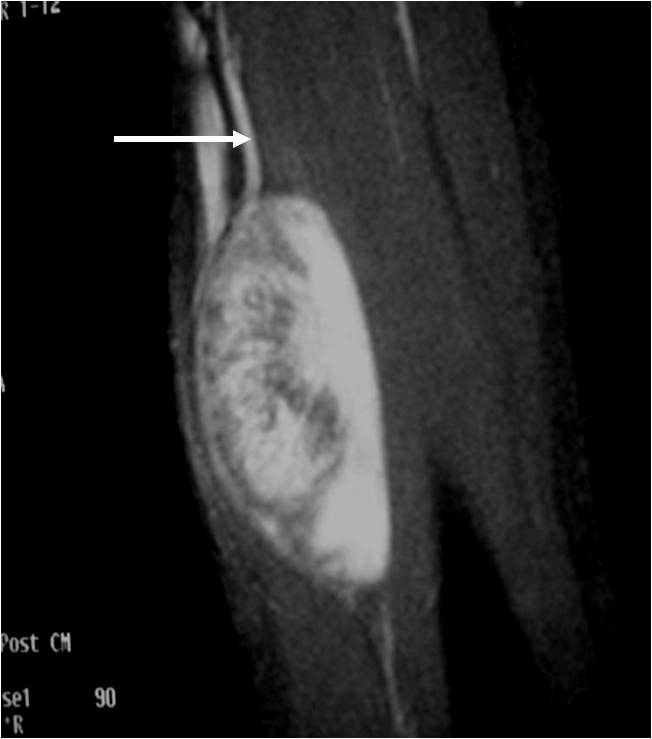What is a Clear Cell Sarcoma?
Clear Cell Sarcoma is a very rare and aggressive sarcoma. The 5 year survival rate is 60%.
Who is usually affected?
- • More frequent in adolescents and young adults.
- • More often in males (60%).
- • Average age of diagnosis is 25 years old.
Causes
- • 90% of cases have a genetic translocation of t(12;22) (q13;q12).
Common Bones Involved
- • 95% of cases are in the lower extremities, most commonly affecting the foot and ankle.
Signs and Symptoms
- • Signs and symptoms include a lump under the skin with or without pain, sudden weight loss, fatigue and night sweats.
Biological Behavior
- • Clear Cell Sarcoma has a high rate of coming back, called a recurrence.
- • Although there can be a genetic component, it does not run in families.
Diagnosis
- • The work-up often consists of a physical examination, X-rays, CT scans, MRI, and sometimes bone scans are required. CT scans can be used to check for subtle mineralization that may help with the diagnosis.
- • CT of the chest is necessary to check for pulmonary metastases. The lungs and other bones are the to most common sites for the tumor to spread.
- • The diagnosis is often confirmed with a biopsy, which means taking a sample of tumor and having it analyzed under a microscope by a pathologist.
Risk to your limbs
Clear Cell Sarcomas are cancerous aggressive tumors that, if left unchecked, will grow and destroy your normal bone. As the tumor slowly grows, the bone is weakened and you are at an increased risk of breaking the bone due to the tumor (called a pathological fracture). They may also spread to your lungs or other bones.
Radiographic imaging is used to help form a diagnosis. These include X-Ray, MRI, CT and Bone Scans.
An example of an MRI is shown.

Treatment of Clear Cell Sarcoma
The treatment of Clear Cell Sarcoma is wide surgical excision and radiation. It is not very responsive to chemotherapy treatment.
Surgery
Surgical treatment includes wide or radical resections to remove the complete tumor and additional margins. The removal of additional, surrounding margins ensures that the tumor is completely removed and decreases the chances of the tumor coming back.
Radiation
Radiation is a treatment option for some cancers. Radiation therapy is a localized treatment that utilizes high-energy particles or waves to kill cancerous cells. Because radiation therapy is a localized treatment, it only affects the area in which it is set to target and therefore eliminates the risks of damaging healthy cells throughout the body. Not only is it used to treat cancer, but it can also decrease the chances of the cancer from recurring. Lastly, radiation may be used in conjunction with other treatments, such as surgery or chemotherapy, to treat cancers.
MRI of a Clear Cell Sarcoma

This is an example of a MRI image showing a Clear Cell Sarcoma in the foot.






